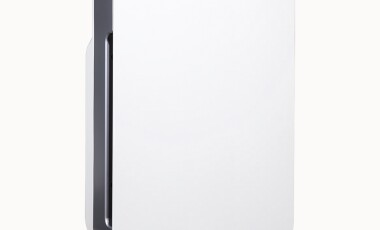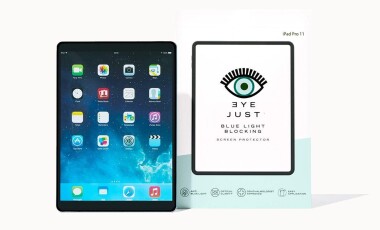With the embers of the campfire flickering out, the only other lights I could see in the inky black night were the twinkling stars, a tiny sliver of the moon, and the occasional flash of a headlamp from others in my camping party.
The miles of that day’s hike were making my middle-aged knees creek more than usual, and the impenetrable darkness had me nodding off in my camp chair. I said my goodnights, brushed my teeth, crawled into my tent, and zipped up my sleeping bag. In the last minutes before I drifted off, I checked the time on my watch. It was 9 p.m.
The significance of the time didn’t strike me until the next morning when I awoke naturally at 6:30 a.m. An inveterate night owl, I hadn’t seen a 9 p.m. bedtime in decades, outside of illness. At home, I struggled to fall asleep before midnight, even with pharmaceutical assistance. Waking up before 9 a.m. without at least two alarms jangling in my ear was even rarer than an early night.
I had long believed my body clock was immutable, forever set to the hours of “after dark” and “too late.” Several times a year, I would attempt to re-set my circadian rhythm (the 24-hour cycle of physical and mental changes that respond to light and dark), and it was like playing tug-of-war with an elephant. Yet, while out camping under the desert skies of Utah and Arizona, staying up past 9 o’clock had become a momentous undertaking. For the first time in my life, I realized I could fall asleep much earlier, under the right conditions. But in a world without artificial light, however, my body could tell my brain to power down. I realized that something about my screens and LED lights was interfering with this natural process. Change that, and perhaps my circadian rhythm would have a fighting chance.Why artificial light made me an artificial night owl
However much those of us on Team Night Owl might like the quiet of the wee hours, humans are fundamentally daytime creatures. Historically, when the sun dropped below the horizon in the evening, the world was dark — the only lights entering our eyes and signaling our brains were the orange embers from a fire and the pale glow of the moon. The lack of daylight signaled a part of the brain called the suprachiasmatic nucleus (SCN for short) to release a hormone called melatonin. The evening surge in melatonin acts as an ‘off’ switch for our bodies, telling us to power down and get some sleep.
The key to this jolt of melatonin is the stark difference between the bright light of day and the darkness of night, explains University of Colorado physiologist Kenneth Wright. Scientists measure light’s intensity using a unit called lux. Direct, bright sunlight produces about 100,000 lux. The warm glow of a full moon is around 0.1 lux. An average household lightbulb produces 200 to 400 lux, and the screen of a laptop or smartphone is around two to five lux.
“We spend so much time indoors these days, that we experience dimmer light during the day and brighter light at night. Because that difference is so much smaller, the signal to our brains that it’s time to sleep isn’t nearly as strong,” Wright says. This lowers the amount of melatonin released by the SCN and, consequently, we stay up later, he explains.
How camping can help reset your circadian clock
Wright’s experiments show that camping is a great way to return to our more paleolithic sleep patterns — and it can happen quickly.
In a 2013 study in the journal Current Biology, Wright found that a week of tent camping in the Rocky Mountains without artificial light from phones, flashlights, and other sources was enough to completely reset the circadian clocks of the eight study participants. The study’s results were almost completely matching mine.
A follow-up study in 2017 showed that even a weekend camping trip was enough to shift circadian rhythms, and that this effect was most potent in the winter, when daylight hours are shortest. Wright suspects this is because it gets dark earlier in the winter, which leads to an earlier spike of melatonin to make us tired.
I read the research when it first came out and thought I would be an exception. Turns out I was wrong. My first night camping, I slept terribly. I had a splitting headache from jet lag and my sudden arrival at an elevation of 7,000 feet from my home at sea level meant I was gasping for air. The next day’s dramatic descent, however, meant that I was asleep on day two just after 9 p.m., sleeping solidly until 6:45 a.m. the next morning. My schedule remained that way for the rest of the two weeks I was hiking.
How to maintain better sleep cycles
After returning home and immediately falling back into my historic late-night ways, I decided to see if I could recreate parts of my trip to help me get to bed at a reasonable hour. I consulted sleep experts, research articles, and everything in between.
I realized that, while I still tended toward Team Night Owl, I did have control over the huge array of environmental cues that were cajoling me to stay up late. While a 9 p.m. bedtime in my "everyday life" might be too optimistic, my camping trip taught me that if I can change some of the variables in the world around me, I can coax my body into falling asleep before midnight.
Here’s what I learned.Get active
Part of what helped me get to bed early while hiking was pure physical exhaustion. Even on days when we stayed in Airbnb’s to do laundry and enjoy a long, hot shower, I still collapsed into bed before 10 p.m. Getting adequate exercise is a huge benefit for sleep health, Wright explains. While exercising indoors beats not exercising at all, being active outside during daylight hours provides a burst of bright light to help reset your circadian clock.
While my work schedule sadly does not allow for daily 10-mile hikes (nor would my knees appreciate scrambling over boulders on the regular), I now try to ride my bike or walk a few miles outside every day when the weather cooperates. Wright says that any type of body movement outside will do the trick — it’s the combination of moving your body and being outside that’s important.Ditch the devices
On my camping trip, I had my eReader, but my phone and laptop were packed away. Wi-Fi signals didn’t exist, and, often, neither did a cell signal. Checking emails and doomscrolling on social media couldn’t happen. Ditto for late-night texts with friends.
As someone who makes their living as a writer, staying this disconnected on a permanent basis isn’t ideal — or even possible — but I did find ways to cut back on screen time at home.
What makes our devices so harmful to sleep is a perfect storm, explains Catherine Darley, founder of the Institute of Naturopathic Sleep Medicine. The type of light emitted by our screens is particularly powerful at activating the SCN, which delays the release of melatonin. A 2014 study in the Proceedings of the National Academy of Sciences found that individuals who read e-books in the hour before bed produced less melatonin and took longer to fall asleep. What’s more, Darley points out, screen time also quickly eats into our sleep time.
I downloaded a free app timer and set it to block access to most apps at 10 p.m. This locked me out of the time-waster apps I tended to use during revenge bedtime procrastination, while still letting me make and receive emergency calls, set my alarm, and so on.
If it’s not possible to stop screens completely, your device’s “bedtime” option dims the blue light. While this reduces the type of light that has the strongest effect on wakefulness, that the best option is still to completely switch everything off.
Out on the land, I found that I could get to bed plenty early while reading e-books on ‘bedtime’ mode, ditto for at home. Others may be more sensitive.
Another trick I learned from Darley for reducing both artificial light and stress before bed, is to switch off alerts from email and social media several hours before you want to go to sleep. Not only can the light keep you up, so can the stress.Dim the lights
While the light from our screens might catch the most flak for disrupting our sleep patterns — and rightly so— it’s not the only culprit. Darley says that bright light from any source, regardless of whether it’s a phone or a lightbulb, interrupts the cues from the natural world that tell the brain to start producing the sleep hormone melatonin. Putting down your phone and iPad is all well and good, but if you’re sitting around in a bright living room, then you might not notice much of an effect, she says.
To help you ease into sleep, she recommends dimming the lights an hour or two before bed to less than 50 lux (think of the glow from a night light). You can do this manually with a dimmer switch. Alternately, you can buy smart bulbs and put them on a timer to start dimming automatically an hour or two before bed, according to Darley. Warmer lights are also preferable.Find a bedtime routine
As kids, many of us had a nighttime routine to help us wind down after active days. With nonstop work deadlines and hectic schedules, creating bedtime rituals can seem as far removed from our everyday lives as the pages of "Where the Wild Things Are." But Darley says that it’s one of the things she finds most helpful to her patients who are struggling to fall asleep.
While out hiking and camping, my before-bed routine was simple. After dinner, I read a few chapters on my ebook reader (set to low-light mode), ate some snacks, and curled up in my sleeping bag. At home, I like to read, do crosswords or Sudoku, or knit right before I call it a day. Darley recommends any sort of activity that’s quiet and relaxing and doesn’t stimulate your brain too much, such as yoga, meditation, a warm bath, reading a book, or journaling. Although Darley says 30 minutes to wind down is ideal, even 10 or 15 minutes can be effective.Embrace the contrast
If bright light is your enemy at night, it’s your best friend during the day.
I’m not talking about those flickering fluorescent bulbs in your office. The experts recommend getting natural sunshine.
If you can’t spend your days outside, Wright recommends getting out in the first hour or two you’re awake. The burst of bright light right after awakening helps your brain sweep away the last vestiges of nighttime drowsiness, according to Wright. It also provides a powerful signal to your circadian clock that it’s morning and time to be alert.
If an early morning walk isn’t possible, Darley and Wright say that a good substitute is a sun lamp, like the ones used to treat Seasonal Affective Disorder — a type of depression related to seasonal change and linked to winter’s shorter days. They recommend a light that provides at least 10,000 lux. I got one for my desk that I switch on for the first hour or two in the morning. While I can’t say it’s the one practice that’s fixed everything, it’s part of a whole suite of changes that are helping me tackle my bad nocturnal habits.










